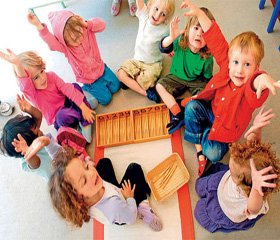Журнал «Здоровье ребенка» 8 (51) 2013
Вернуться к номеру
Analytical Evaluation of Scientific Communications in yhe Field of Children and Adolescents Health Care
Авторы: Korenev M.M., Vodolazhsky M.L., Sydorenko T.P., Fomina T.V., Koshman T.V. - State Institution «Institute of Children and Adolescents Health Care of National Academy of Medical Sciences of Ukraine», Kharkiv; Gorban A.Ye., Zakrutko L.I. - Ukrainian Center of Scientific Medical Information, Patent and Licensing of Ministry of Public Health of Ukraine, Kyiv, Ukraine
Рубрики: Педиатрия/Неонатология
Разделы: Справочник специалиста
Версия для печати
Science communications in medicine are a system of scientific medical documents which provide customers (doctors or researchers) with information, both scientific and applied, arising from research developments.
The components of the scientific communication means in medicine, particularly in the field of children and adolescents health care, are as follows: the NAMS Information bulletin, Ministry of Health Register on sectorial innovations (Ukraine), Register of scientific medical forums (congresses, conferences, symposia, and practical-scientific conferences), annual reports on the most important national and foreign research achievements in medicine, Patent bulletin, Bulletin of Copyrights registration, State Register of unclassified completed technologies, methodological guidelines and letters of information.
Means of scientific communication which form information and innovation resources of the research are addressed, first of all, to the specialists of practical health care, as well as to researchers, being aimed at carrying new developments into the practical health care as soon as possible.
The data obtained suggest that more than half of studies is carried out exclusively in the field of clinical pediatrics (57.89 %). Percentage of other clinical trends (pediatric surgery, gynecology, neurology, etc) is 27.64. Next in the descending order are: studying the impact of the environment on the state of health of the younger generation (10.89 %), hygiene of children and adolescents (4.95 %), social pediatrics (2.47 %), and improvement of medical support organizations (1.23 %).
Most preferable of the worked up RαDs are clinical pediatrics, including infectology (11.28 %), pediatric surgery (10.52 %), topical issues of physiology and pathology of newborns and infants (9.39 %) pulmonology (7.89 %), and ecopediatrics (7.14 %).
Analysis of the data obtained has revealed that the results of research are reflected mostly in the articles (57.46 %), abstracts of reports at practical-scientific conferences, and scientific symposia (39.24 %). The analysis is the evidence that among the most widespread forms of realization of the research results among the objects of intellectual property and copyrights are useful models (21.9 %), and the least preferable are copyright certificates as regards scientific composition (3.94 %).
Analysis of subject trends concerning innovation resources has shown that most of all information resources are accumulated in such fields as infectology (11.22 %), newborns and infants, pulmonology (10.82 and 10.55 %, respectively), gastroenterology, cardiology, and rheumatology (about 7 %). Particular attention is given to setting up the objects of intellectual property, namely in: infectology, gastroenterology, rheumatology, and pulmonology (15.79; 14.04 and 14.47 %, respectively).
114 scientific forums were carried out on the problems of physiology, pathology, and medical support organization in Ukraine over the studied period (2007–2011).
The amount of practical-scientific conferences was 74.56 %, scientific symposia 14.9 %, world-wide forums — 7.0 %, and congresses — 3.5 %.
Scientometric analysis of Rα Ds, carried out in Ukraine in 2007–2011 in the field of children and adolescents health care, has revealed that the research activity relates mainly to clinical pediatrics, surgery, physiology and pathology of sexual development. Such trends as ecopediatrics as well as pediatric and adolescent hygiene have productive development, too. Much less attention is paid to social hygiene and organization of medical support with regard to children and adolescents.

